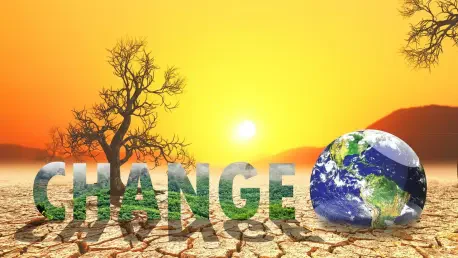I’m thrilled to sit down with Donald Gainsborough, a renowned political savant and leader in policy and legislation, who heads Government Curated. With his deep expertise in environmental policy and its intersection with traditional livelihoods, Donald offers invaluable insights into the pressing challenges faced by communities in India’s Ladakh region. Today, we’ll explore how climate change is threatening the iconic yaks and the herding culture that has sustained generations, delving into the environmental shifts, cultural impacts, and policy implications of this crisis.
How did you first become aware of the challenges facing yak herders in Ladakh, and what drew you to advocate for their cause?
My journey into this issue began when I was working on broader climate policy frameworks for vulnerable regions. Ladakh stood out due to its unique high-altitude ecosystem and the profound cultural heritage tied to yak herding. I was struck by reports of declining yak populations and the struggles of herders—especially women—who have maintained this way of life for centuries. What drew me in was the intersection of environmental degradation and cultural loss. I felt compelled to use my platform to highlight their plight and push for policies that address these interconnected challenges.
Can you paint a picture of the traditional herding lifestyle in Ladakh and why it holds such significance for the community?
Absolutely. In Ladakh, herding yaks is more than just a livelihood; it’s a way of life deeply woven into the cultural fabric. Families, often led by women, wake at dawn to milk yaks, gather wool, and guide them to graze across vast, rugged plains. Yaks provide milk for tea and butter, wool for blankets, and even serve as a symbol of resilience in this harsh environment. Beyond economics, they’re tied to spiritual practices and community identity. Losing this lifestyle would mean losing a piece of history and a unique relationship with the land.
What are some of the most striking environmental changes you’ve learned about in Ladakh, and how are they impacting the region?
The changes are stark. Herders have shared stories of dwindling snowfall and rainfall, which used to nourish the high-altitude pastures. Winters are warmer now, with temperatures rising about 3 degrees Celsius over recent decades. This disrupts the delicate balance of the ecosystem. Less precipitation means sparse grass for grazing, and unpredictable weather patterns add to the stress. These shifts aren’t just numbers on a chart; they’re altering the very landscape that sustains both yaks and the people who depend on them.
How are these environmental shifts directly affecting the yaks and, by extension, the herders’ way of life?
Yaks are built for cold, harsh conditions, so rising temperatures and heatwaves hit them hard. They’re experiencing physical stress, reduced wool and milk production, and even higher rates of illness. For herders, this means less income and food security. On top of that, the scarcity of nutritious vegetation forces them to travel farther for grazing, which is exhausting and sometimes impossible. It’s a vicious cycle—declining yak health impacts livelihoods, and struggling livelihoods make it harder to adapt to these changes.
From a policy perspective, what do you see as the biggest hurdles in addressing the decline of yak populations in Ladakh?
One major hurdle is the lack of localized data and resources to fully understand and tackle the problem. While we know yak numbers have dropped dramatically—from nearly 34,000 in 2012 to under 20,000 by 2019—pinpointing climate change’s exact role versus other factors like overgrazing or market shifts is tricky. Additionally, crafting policies that balance immediate relief for herders with long-term environmental goals is complex. There’s also the challenge of engaging younger generations who are moving away from herding. Without their buy-in, no policy will sustain the culture.
How can policies be shaped to support both the environmental needs of Ladakh and the cultural preservation of herding communities?
It starts with collaboration. Policies must involve herders themselves, ensuring their knowledge shapes solutions. We can look at funding sustainable grazing practices and water conservation projects to restore pastures. Providing incentives for younger generations to stay in herding—like access to education or markets for yak products—could help. On the environmental side, regional climate adaptation plans, such as reducing emissions and protecting Himalayan ecosystems, are critical. It’s about integrating cultural preservation into broader climate strategies, so neither is sacrificed.
What role do you think global awareness and international cooperation can play in supporting regions like Ladakh facing these climate challenges?
Global awareness is crucial. Ladakh’s story is a microcosm of what’s happening in many vulnerable regions worldwide. By amplifying these voices through international platforms, we can attract funding, research, and technical support. Cooperation between nations, especially in the Himalayan region, can lead to shared strategies for climate adaptation and ecosystem protection. It’s also about holding larger polluters accountable—global emissions impact local lives here. Building those bridges can bring resources and hope to communities on the frontlines.
Looking ahead, what is your forecast for the future of yak herding in Ladakh if current trends continue, and what gives you hope for change?
If current trends persist—rising temperatures, erratic precipitation, and cultural drift—I fear yak herding could become unsustainable in Ladakh within a few decades. We might see further declines in yak populations and more herders forced to abandon their traditions. But I do have hope. The resilience of these communities is remarkable, and there’s growing global attention to climate justice. With the right policies, community engagement, and international support, I believe we can turn the tide. It’s about acting now to protect both the environment and the heritage of Ladakh.









